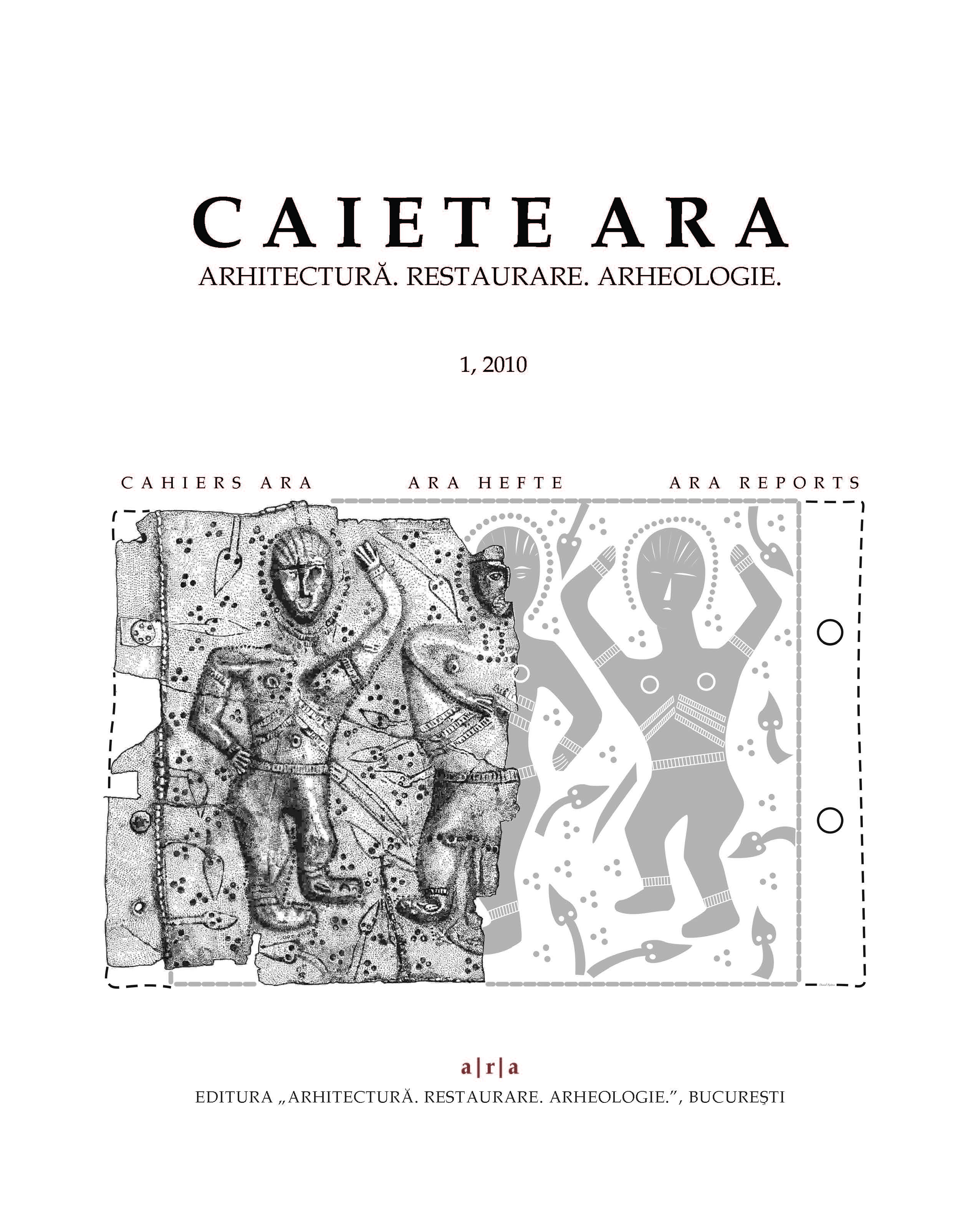Câteva aspecte privind tehnica de realizare și starea de conservare a picturilor murale de la mormântul hipogeu roman „cu banchet” din Tomis-Constanța
Several aspects regarding the painting technique and the conservation state of the mural paintings from the Roman hypogeum ”with banquet” in Tomis-Constanța
Author(s): Romeo GheorghițăSubject(s): Archaeology, Architecture, Ancient World
Published by: Editura "Arhitectură. Restaurare. Arheologie"
Keywords: discovery;protection;Roman hypogeum;mural paintings;painting techniques;microclimate;deterioration;in situ conservation;compatibility;preventive conservation;
Summary/Abstract: One of the cases in which the application of the basic principles of in situ conservation and restoration was tried is the hypogeum-tomb with mural painting in Tomis - Constanţa. It was discovered in 1988 in the north-western area of the ancient city of Tomis. The archaeologists set its construction and usage between the Roman and Byzantine period, starting with the 4th century. The hypogeum in Constanţa preserves its original mural painting almost entirely. It has a coherent iconographic program, with significant stylistic marks, which demonstrates its origin as a Roman Paleochristian tomb. The iconography is spectacular due to the scene on the western wall, opposite the entrance, which illustrates a ritual feast. The paintings of Roman hypogea built between the 3th-6th centuries and found in Dobrogea at Ostrov, Silistra and Mangalia, along with the three in Constanţa, are provincial variations of the Roman classic technique, similar to the paintings from other hypogea and catacombs from the same period but located in other areas. In situ observations, the close study of the surfaces and the previous chemical analysis bring new information about the painting techniques of the mural paintings inside the hypogeum at Constanţa. Analyzing its passage through time and its state of conservation one can notice the fact that its microclimate was relatively stable, as a consequence of the fact that the space was unused for a long period and also of the surroundings that consisted of clay soil. Through the accidental discovery of the hypogeum some damage was made to the superior part of the vault. After its discovery (another period of its passage through time), a temporary protection building was constructed. In situ emergency interventions of conservation were minimal and aimed at the compatibility of the materials used and the resistance at the active degradation factors. After these emergency interventions, carried out until the year 1995, other projects of general protection of the hypogeum or conservation operations could not be realized, even if as a consequence to the analysis carried out several solutions of general protection and preventive conservation are being considered. As a conclusion to all these technical, methodological and strategic specifications, one could say that long term conservation should be focused on the fight against the causes of the deterioration, rather than “fixing” its effects.
Journal: Caiete ARA
- Issue Year: 2010
- Issue No: 1
- Page Range: 75-86
- Page Count: 12
- Language: Romanian
- Content File-PDF

